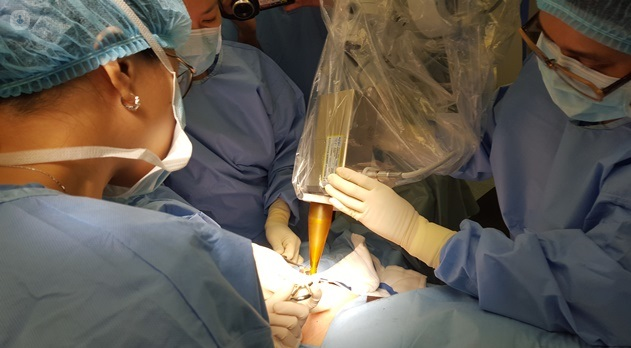

What is intraoperative radiation therapy?
Intraoperative radiation therapy (IORT) is a technique in which radiation is delivered to a cancer tumour during a surgical procedure.

Why is intraoperative radiation therapy performed?
IORT is mostly used in breast cancer, but it can also be applied to tumors of the pancreas, colon, rectum and liver, or in any location of the body accessible through surgery. IORT is only suitable in patients who are able to undergo surgery and who are in the early stages of their cancer.
The aim of IORT is to deliver targeted radiation with minimal damage to the surrounding tissues and skin. It takes less time than traditional radiotherapy, a course of which can take several weeks to deliver.
What happens during intraoperative radiation therapy?
Traditionally, radiation therapy involves passing beams of radiation through the skin and tissues to the target tumour. Radiotherapy techniques have in recent decades become increasingly targeted, but without operating on the patient the beam still needs to pass through tissue to reach the tumour.
Intraoperative radiation therapy involves applying a very high dose of radiation to the area to be treated during the surgical procedure to remove the tumor. Thanks to the direct access that the surgeon has to the tumour, adjacent tissues and organs receive minimal exposure, since they can be moved away to protect them during irradiation. With healthy tissues "excluded" from the area to be treated and the tumor exposed to the maximum intraoperative radiation therapy, the result is a significant improvement in terms of disease control with minimal toxicity.
The delivery of radiation can take about 5-10 minutes, but the overall procedure may take longer depending on how easily the surgeon can access the tumour.
